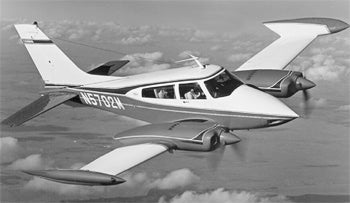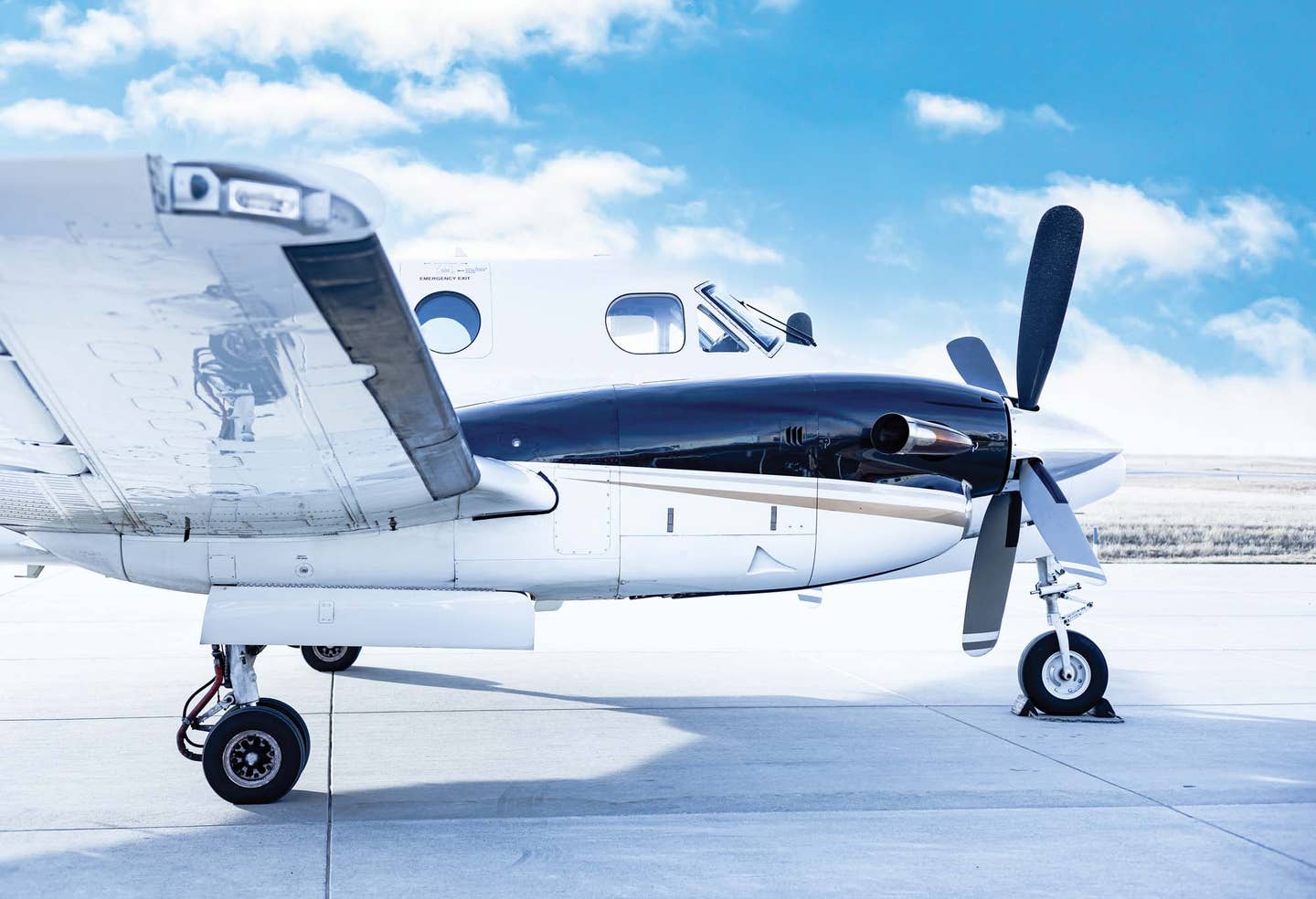 |
| STANDARD DATA: (310R) Seats 4-6. Gross wt. 5,500. Empty wt. 3,358. Fuel capacity 102-207. Engines two 285-hp fuel-injected Continentals. PERFORMANCE: Top mph 238. Cruise mph 224. Stall mph 81. Initial climb rate 1,662. Ceiling 19,750. Range 568-1,303. Takeoff distance (50) 1,700. Landing distance (50) 1,790. STANDARD DATA: (T310R) Seats 4-6. Gross wt. 5,500. Empty wt. 3,467. Fuel capacity 102-207. Engines two 285-hp turbocharged Continentals. STANDARD DATA: (310) Seats 5. Gross wt. 4,700. Empty wt. 2,695. Fuel capacity 102. Engines two 240-hp Continentals. STANDARD DATA: (310/260-hp) Seats 4-6. Gross wt. 5,200. Empty wt. 3,110. Fuel capacity 184. Engines two 260-hp fuel-injected Continentals. |
The 310 was the first twin engine model aircraft developed by Cessna after World War II. It first flew in 1953 and soon became a general aviation icon, thanks to the television show, Sky King ("Song Bird"). Models prior to 1960 have the square dorsal fin, the swept style having been introduced in 1960. Horsepower rating is 240 for each engine through 1958. In 1959, fuel-injected Continental engines rated at 260 hp were installed. From 1954 through 1957, the 310 had no alphabet designation. Starting in 1958 and continuing through 1971, each annual model was identified, beginning with the 310-B; however, there is no 310-E or 310-M in volume production due to engineering changes. The alphabet designation was dropped in 1972.
Two major changes in the 1956 model year were an increase in the number of windows and an improved Continental engine that was available. Earlier versions of the 310 are a little more difficult to pilot due to imbalance caused by fuel distribution. Since this has been revised, its maneuvering characteristics have improved. The 310 also yields more hard landings per pilot than other twins because flying speed is lost more quickly on the flare. The latest versions were available with turbocharged engines of the exhaust-driven type. The newer models featured a larger windshield and a new back window giving more cabin light and better passenger/pilot visibility. The nose of the most recent 310s has been extended 32 inches to add room for up to 350 pounds of avionics and/or cargo. Optionally available fuel tank capacity is up to 207 gallons and 285-hp injected powerplants provide a total of 50 horses more than before.
For 1977, the 310 was equipped with several new refinements, including improved cabin ventilation, a redesigned escape hatch, increased capacity of the circuit breaker panel by 30%, and simplified maintenance with a one-piece autopilot assembly. The wing locker fuel tanks now have tear-resistant bladders and a new metal containment canister. Newer model 310s benefited from a one-year warranty on the airframe, the avionics, and the engine. Also, new threadless blade propellers were standard; each is six pounds lighter than the previous prop, for a total of 12 pounds per aircraft. Cessna ended production of the 310 in 1980.

Subscribe to Our Newsletter
Get the latest Plane & Pilot Magazine stories delivered directly to your inbox






